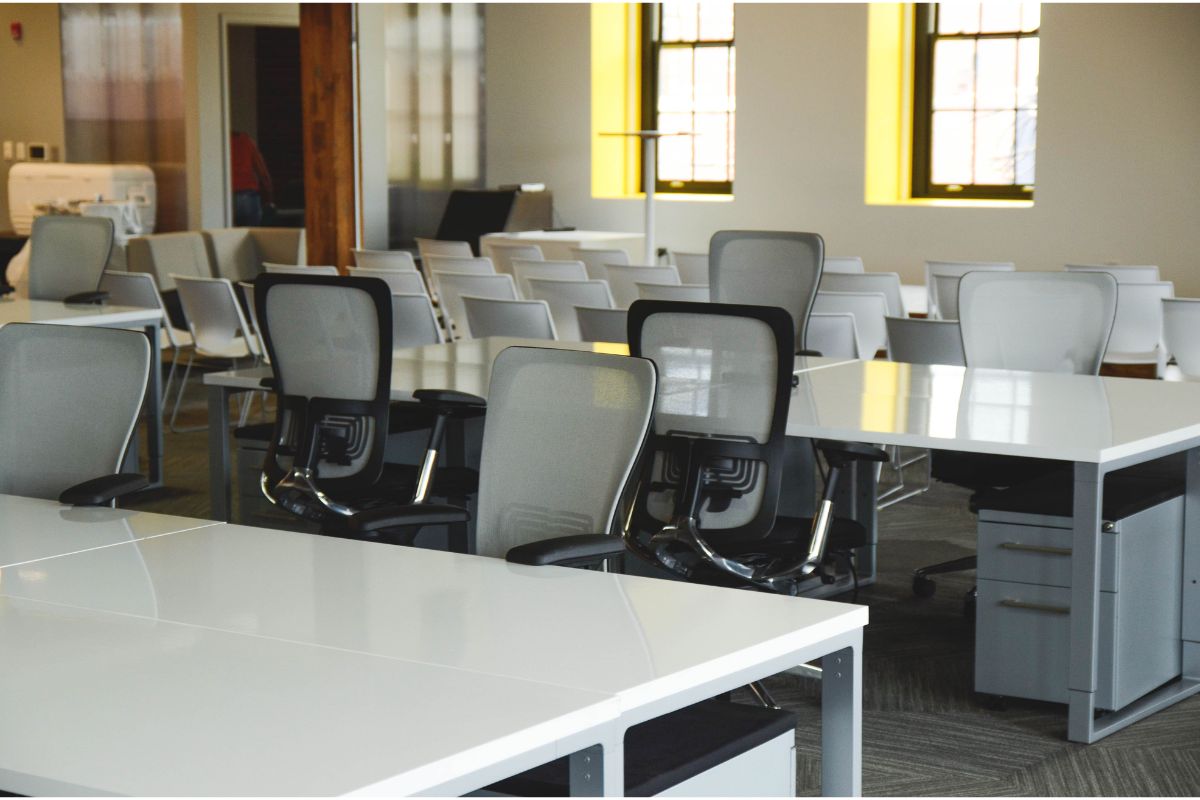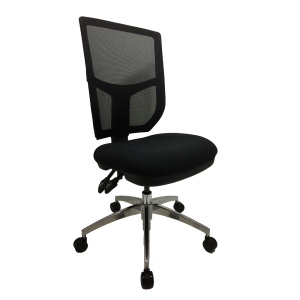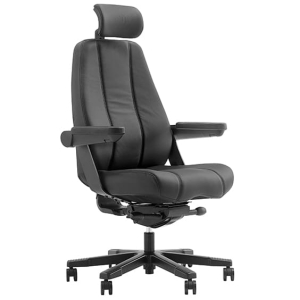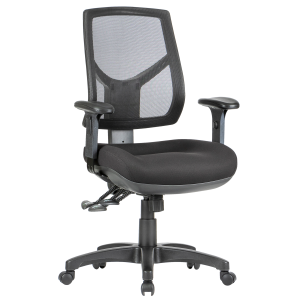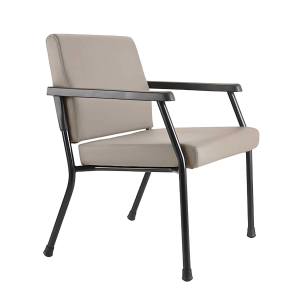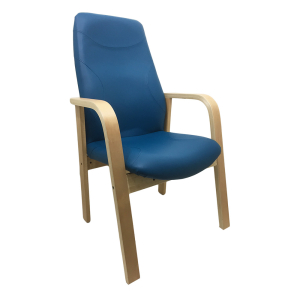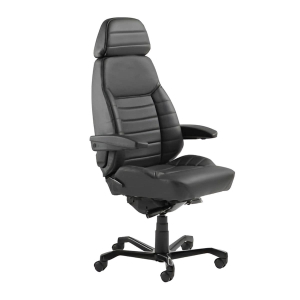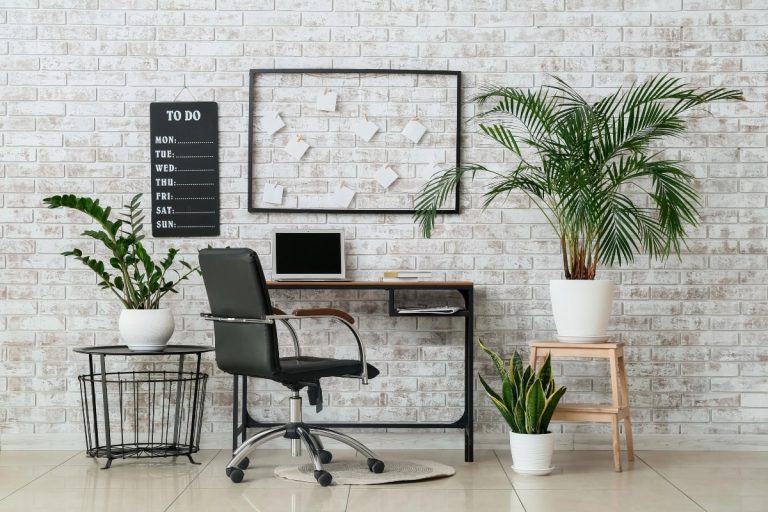If you’ve ever looked for the perfect chair for your workspace, you’ve probably come across both task chairs and office chairs. But what exactly are the differences between a task chair and an office chair, and how do you know which is right for you?
This blog aims to help you navigate the details to make the best choice for your comfort, productivity, and budget.
What is a task chair?
A task chair is specifically designed for people who spend short sessions at a desk or computer (could be a call centre, for example). Task chairs are focused on being flexible, offering basic adjustments so you can set the seat height and backrest to match your body and promote good posture.
Common features of task chairs include:
- A lightweight, functional design
- Basic adjustment levers for tilt, height, and back support
There is a wide range of budget task chair models designed to be flexible while still providing basic ergonomic support.
What is an office chair?
The term office chairs is broader and covers many types of seating found in workplaces. Office chairs can include executive chairs, meeting room chairs, visitor chairs and more.
These chairs often prioritise style and appearance, especially in client-facing spaces, and may include:
- High-back or mid-back designs
- Fixed or adjustable armrests
- Upholstered finishes, such as black leather or mesh
- Stylish designs meant to complement office decor
Benefits of ergonomic task chairs
For focused short-term desk work, ergonomic task chairs will help support your posture. Task chairs are designed for flexibility and frequent adjustment, allowing you to move easily between tasks while maintaining proper alignment.
Some basic but important ergonomic features in task chairs include:
- Adjustable levers for seat height and recline for a customised fit to your desk setup
- Compact armrests or armless options for improved movement at the desk
Having an ergonomic task chair can help you stay comfortable and productive, reducing strain and keeping your body well supported during short hours of detailed work.
Ergonomic benefits of office chairs
Whether you work in a corporate setting or a dedicated home office, ergonomic office chairs are essential for maintaining good health and productivity. These chairs are designed to support the spine’s natural curve, keep shoulders relaxed, and ensure your feet rest flat on the floor.
Key ergonomic features in office chairs include:
- Adjustable seat height to keep your knees at a 90-degree angle
- Lumbar support to reduce pressure on the lower back
- A tilt or recline function for flexibility
- Armrests that allow your shoulders and arms to rest naturally
It’s important to understand that the right ergonomic office chair can significantly improve your daily comfort and help prevent long-term issues such as back or neck pain.
How to choose the right task chair
When selecting a task chair, thinking about your workspace or home office desk is essential. Here are a few key factors to check:
- Seat height: Look for easy height adjustment to keep your feet flat and your knees bent at a right angle.
- Backrest: Make sure the backrest offers proper lumbar support to protect your lower back.
- Armrests: Adjustable armrests help reduce shoulder and elbow strain.
- Tilt and recline: A good chair will allow you to change your position slightly throughout the day without losing support.
- Task chair price: While focusing only on cost is tempting, it’s important to remember that a well-built ergonomic chair is an investment in your health and productivity.
Choosing the right office chair
When selecting an office chair, keep these points in mind:
- For executive offices or meeting rooms, choose ergonomic office chairs with adjustable seat height, supportive backrests, and comfortable armrests.
- For reception or casual use, focus on style, durability, and easy assembly.
- Check for flexibility and adjustability to suit different body types and ensure maximum comfort.
Assembly and adjustments
Most office and task chairs come flat-packed and are designed for straightforward assembly. Typically, you will need to:
- Attach the base and wheels
- Connect the seat and backrest
- Install the armrests (if included)
- Make necessary adjustments for height, tilt, and recline
Once assembled, you can tailor the chair to your body and workspace to ensure the best fit and comfort.
Key comparisons between task chairs and office chairs
Primary use
- Task chairs: Ideal for short hours of focused desk or computer work
- Office chairs: Suited to general office settings, meetings, or reception areas
Adjustability
- Task chairs: Varies by style; some models offer limited adjustments
- Office chairs: High level of ergonomic adjustability (seat height, backrest, tilt, armrests)
Design
- Task chairs: Compact, ergonomic, and function-driven
- Office chairs: Available in a wide range of styles, often prioritising visual design
Price range
- Task chairs: Generally more budget-friendly options
- Office chairs: Broad pricing, with executive styles often more expensive
Ergonomics
- Task chairs: May or may not include ergonomic features, depending on the model
- Office chairs: Focused on supporting posture and long-term sitting comfort
Best used for
- Task chairs: People who spend short hours sitting at a workstation
- Office chairs: Long-term office use, meetings, or to complement office aesthetics
An office chair is usually better if you seek maximum comfort and adjustability for long work sessions. A task chair may suit your needs if you need one just for short work sessions with tasks like typing, etc.
Why your chair matters
You might not realise how many hours you spend sitting each day, whether working at a computer, attending meetings, or completing other tasks. Poorly designed chairs can lead to posture problems, back and shoulder pain, and even headaches.
Investing in a high-quality task chair or office chair helps:
- Improve body alignment and posture
- Reduce strain on the neck, shoulders, and lower back
- Support the natural positioning of the knees, elbows, and shoulders
- Enhance productivity by solving common comfort and support issues
Love your workspace again
From this, task chairs and office chairs are similar to each other and really which one is for you depends on the purpose you’ll be using it for. You can enjoy better flexibility and generally cheaper options with a task chair, while you will have improved comfort and a healthier sitting experience with an office chair.
If you’re ready to explore your options, contact us today to learn more about our range of premium chairs or visit our Perth showroom to find the perfect fit for your workspace.
Frequently asked questions
What’s the best chair option for people with back pain?
An office chair with adjustable lumbar support, tilt tension, and correct seat depth is typically the best option. Ensure your next chair has these features.
How often should I adjust or readjust my chair settings?
You should check and adjust your chair settings regularly, especially if you feel discomfort or if multiple people use the same chair. Small adjustments can make a big difference over time.
How do I know if a task chair will fit my desk setup?
Check the chair’s height range and armrest width to ensure it can slide under your desk when needed. It’s also good to measure your desk height and compare it to the chair’s specifications.


